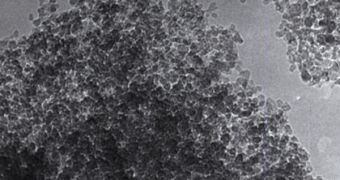Over the past few years, gene therapy has proven itself to be one of the most reliable methods of treating a large number of conditions, ranging from cancer and heart conditions to diabetes. The main obstacle in developing these treatments even further is creating an effective delivery system that can get the active ingredients to their destinations unharmed and in due time. Northwestern University researchers have now proposed the use of nanodiamonds as a delivery system, a change that they say would benefit the patients. The genes reach their destination efficiently and in complete biocompatibility.
“Finding a more efficient and biocompatible method for gene delivery than is currently available is a major challenge in medicine. By harnessing the innate advantages of nanodiamonds we now have demonstrated their promise for gene therapy,” Dean Ho, an NU McCormick School of Engineering and Applied Science assistant professor of biomedical engineering and mechanical engineering, explains. He is also a member of the Robert H. Lurie Comprehensive Cancer Center at the university. He and his team created the newly engineered, surface-modified nanodiamond particles.
According to preliminary study results, published in the latest issue of the respected scientific journal ACS Nano, the new, hybrid delivery system proved to be 70 times more efficient than sending the genes inside the body on their own. Such a remarkable difference could easily impact and reshape a large number of research avenues in the field of nanomedicine.
“A low molecular weight polymer called polyethyleneimine-800 (PEI800) currently is a commercial approach for DNA delivery. It has good biocompatibility but, unfortunately, is not very efficient at delivery. Forms of high molecular weight PEI have desirable high DNA delivery efficiencies, but they are very toxic to cells,” the first author of the new paper, Xue-Qing Zhang, who is also a postdoctoral researcher in Ho's lab, explains. By combining PEI800 and nanodiamonds, the efficiency of the system increases by as much as 700 percent.
“There's a long road ahead before the technology is ready for clinical use, but we are very pleased with the exciting properties and potential of the nanodiamond platform,” Ho adds.

 14 DAY TRIAL //
14 DAY TRIAL //